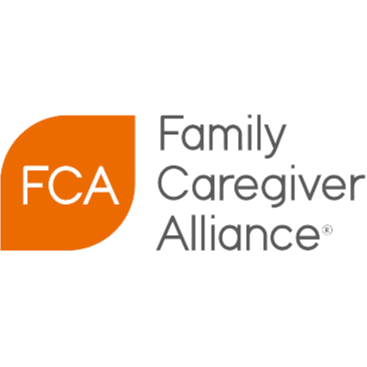Recognize the signs and get the help you need to reduce the toll on your body and mind
YOU MIGHT ALSO LIKE
CLEAR ALL
BY TOPIC
BY TEACHER
BY TYPE
FILTER

TOPIC
- Work-Life Balance (25)
- Well-Being (24)
- Self-Care (22)
- Stress (22)
- Cancer (18)
- Athlete Well-Being (17)
- Self-Mastery (17)
- Creative Well-Being (14)
- Emotional and Mental Health (14)
- Emotional Labor (14)
- Meditation (12)
- Resilience (12)
- Chronic Health Conditions (11)
- Compassion Fatigue (11)
- Asking for Help (10)
- Illness and Injury (10)
- Motherhood (10)
- Offering Support to Others (10)
- Empathy (9)
- Job Loss (9)
- Mind-Body Connection (9)
- Motivation (9)
- Anxiety (8)
- Dementia (8)
- Family Dynamics (8)
- Parenting (8)
- Search for Purpose (8)
- BIPOC Well-Being (7)
- Entrepreneurship (7)
- Handling a Child’s Illness (7)
- Happiness (7)
- Leadership (7)
- Mindfulness (7)
- Neurodiversity (7)
- Self-Development (7)
- Sleep (7)
- Women’s Well-Being (7)
- Authenticity (6)
- Communication Skills (6)
- Compassion (6)
- Neuroscience (6)
- ADD/ADHD (5)
- Breathwork (5)
- Child’s Emotional Growth (5)
- Fear (5)
- Gender Challenges (5)
- Habits of Mind (5)
- Letting Go (5)
- Living with Illness (5)
- Physical Health (5)
- Rest (5)
- Self-Discovery (5)
- Setting Limits and Boundaries (5)
- Work Relationships (5)
- Young Adult Well-Being (5)
- Connection with Nature (4)
- Depression (4)
- Disabled Well-Being (4)
- Emotional Intelligence (EQ) (4)
- Fellowship and Community (4)
- Focus (4)
- Grief (4)
- Growth Mindset (4)
- Honoring Emotion (4)
- Kids and Sports (4)
- Kindness (4)
- Passion (4)
- Productivity (4)
- Self-Actualization (4)
- Self-Healing (4)
- Self-Pressure (4)
- Trust (4)
- Activism/Service (3)
- Anger (3)
- Autism (3)
- Awareness (3)
- Betrayal (3)
- Black Well-Being (3)
- Child’s Trauma (3)
- Chronic Pain (3)
- Confidence (3)
- Exercise (3)
- Generosity (3)
- Guilt (3)
- LGBTQIA Well-Being (3)
- Mindfulness Meditation (3)
- Negative Self-Talk (3)
- Quitting Your Job (3)
- Relationship Challenges (3)
- Relationship with Time (3)
- Self-Acceptance (3)
- Self-Compassion (3)
- Self-Worth (3)
- Spiritual Life (3)
- Affirmations (2)
- Belonging (2)
- Building Culture (2)
- Child’s Autism (2)
- Children’s Well-Being (2)
- Climate Change (2)
- Courage (2)
- Death and Dying (2)
- Decision Making (2)
- Diet and Nutrition (2)
- Discrimination (2)
- Empowerment (2)
- Endurance (2)
- Fatigue (2)
- Finding Meaning (2)
- Gender Discrimination (2)
- Gratitude (2)
- Healthy Eating (2)
- Identity (2)
- Imagination and Creativity (2)
- Indigenous Well-Being (2)
- Inspiration (2)
- Life Challenges (2)
- Life-Altering Injury (2)
- Loneliness (2)
- Men’s Well-Being (2)
- Mental Health Challenges (2)
- Mentoring (2)
- Mindfulness Practices (2)
- Neuroplasticity (2)
- Panic Attacks (2)
- Patience (2)
- Peak Performance (2)
- Personal Development (2)
- Play (2)
- Polyvagal Theory (2)
- Positive Thinking (2)
- Presence (2)
- PTSD (2)
- Retirement (2)
- Self-Control (2)
- Self-Reckoning (2)
- Self-Reliance (2)
- Slumps (2)
- Spiritual Growth (2)
- Trauma Healing (2)
- Unfulfilled Career (2)
- Yoga (2)
- AAPI Well-Being (1)
- Acupressure (1)
- Addiction Recovery (1)
- Aging (1)
- Art Therapy (1)
- Autoimmune Disease (1)
- Biofeedback (1)
- Child’s Challenging Behavior (1)
- Chronic Fatigue (1)
- Clinical Depression (1)
- Cognitive Behavioral Therapy (1)
- Collaboration (1)
- Coming Out (1)
- Compassion Meditation (1)
- Connection (1)
- Consciousness (1)
- Curiosity (1)
- Death or Loss of a Loved One (1)
- Disconnection (1)
- Dysfunctional Childhood (1)
- Economic Justice (1)
- Embodiment (1)
- Energy Healing (1)
- Facing Own Death (1)
- Family Therapy (1)
- Female Empowerment (1)
- Female Friendship (1)
- Financial Instability (1)
- Forest Bathing (1)
- Forgiveness (1)
- Freedom (1)
- Friendship (1)
- Gender Identity (1)
- Gender Justice (1)
- Goal Setting (1)
- Guided Imagery (1)
- Habit Formation (1)
- Highly Sensitive People (1)
- Holism (1)
- Homophobia (1)
- Hospice (1)
- Household Labor (1)
- Human Potential (1)
- Immigration and Assimilation (1)
- Inner Life (1)
- Inner Peace (1)
- Insomnia (1)
- Integrative Medicine (1)
- Integrity (1)
- Journaling (1)
- Joy (1)
- Latinx Well-Being (1)
- Life Force Energy (1)
- Living as an Empath (1)
- Longevity (1)
- Loss of Partner/Spouse (1)
- Lovingkindness Meditation (1)
- Managing Energy (1)
- Masculine/Feminine Dynamics (1)
- Nonbinary Well-Being (1)
- Optimism (1)
- Perception (1)
- Performance Pressure (1)
- Poverty/Economic Inequality (1)
- Quantum Physics (1)
- Racial Discrimination (1)
- Racial Justice (1)
- Racism (1)
- Relationship with Money (1)
- Romantic Relationships (1)
- Self-Employment (1)
- Self-Limiting Beliefs (1)
- Self-Love (1)
- Self-Reflection Practices (1)
- Shadow (1)
- Shame (1)
- Sleep Disorders (1)
- Social Anxiety (1)
- Social Presence (1)
- Social Psychology (1)
- Social Responsibility (1)
- Somatic Practices (1)
- Soul Mission (1)
- Speaking Your Truth (1)
- Spiritual Development (1)
- Spiritual Healing (1)
- Spirituality and Health (1)
- Tarot (1)
- Teacher Burnout (1)
- The Divine (1)
- Time Management (1)
- Transgender Well-Being (1)
- Trauma (1)
- Values (1)
- Veteran Well-Being (1)
- Wake-Up Calls (1)
- Willpower (1)
- Women’s Rights (1)
- Work Ethic (1)
- Yoga Therapy (1)
FILTER

TEACHER
- Arianna Huffington (2)
- Donna Jackson Nakazawa (2)
- Jay Shetty (2)
- Joan Halifax (2)
- Mark Manson (2)
- Richard Davidson (2)
- Sharon Salzberg (2)
- Stephen Porges (2)
- Tara Brach (2)
- Wim Hof (2)
- Adam Grant (1)
- Amy Morin (1)
- Arielle Schwartz (1)
- Ashley Neese (1)
- Aviva Romm (1)
- Belleruth Naparstek (1)
- Christiane Northrup (1)
- Connie Zweig (1)
- Daniel Goleman (1)
- Dave Asprey (1)
- Deepak Chopra (1)
- don Jose Ruiz (1)
- Emiliana Simon-Thomas (1)
- Frank Ostaseski (1)
- Jacqueline Carter (1)
- Jean Shinoda Bolen (1)
- Jessica Dore (1)
- Joan Borysenko (1)
- Judith Orloff (1)
- Light Watkins (1)
- Linda Graham (1)
- Lise Van Susteren (1)
- Lorin Roche (1)
- Martha Beck (1)
- Mirabai Bush (1)
- Oprah Winfrey (1)
- Oshoke Pamela Abalu (1)
- Poppy Jamie (1)
- Ralph De La Rosa (1)
- Rich Fernandez (1)
- Rick Hanson (1)
- Robert Sapolsky (1)
- Saeed Jones (1)
- Stan Tatkin (1)
- Stephen Covey (1)
- Sue Morter (1)
- Swami Mukundananda (1)
- Temple Grandin (1)
- Tony Robbins (1)










